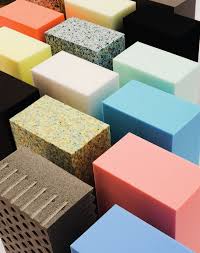Foam mattresses have undergone a remarkable evolution in recent years, propelled by advancements in technology and shifting consumer preferences. From humble beginnings to cutting-edge innovations, the journey of foam mattresses reflects a dynamic blend of comfort, support, and innovation.
Traditional Foam Mattresses: The Foundation
The history of foam mattresses traces back to the mid-20th century when polyurethane foam was first developed. These early foam mattresses provided a notable improvement over traditional spring mattresses, offering enhanced comfort and pressure relief. However, they were limited in terms of durability and support, leading to the development of new foam technologies.
Memory Foam: A Game-Changer in Comfort
In the 1990s, memory foam emerged as a revolutionary material in the mattress industry. Developed by NASA to cushion astronauts during space travel, memory foam quickly gained popularity for its ability to contour to the body’s shape, providing personalized support and alleviating pressure points. This innovative material revolutionized the way we sleep, offering unparalleled comfort and adaptability.
Gel-Infused Memory Foam: Cooling Comfort
As memory foam gained widespread acclaim, manufacturers sought to address one common complaint: heat retention. Gel-infused memory foam was introduced to combat this issue, incorporating gel beads or layers into the foam to dissipate heat and regulate temperature. This technology not only enhanced the cooling properties of memory foam but also contributed to a more comfortable sleeping environment.
Plant-Based Foam: Sustainable Comfort
With growing concerns about environmental sustainability, the mattress industry began exploring eco-friendly alternatives to traditional foam. Plant-based foam, derived from renewable resources such as soybeans or bamboo, emerged as a sustainable option. Not only does plant-based foam offer the same level of comfort and support as traditional foam, but it also reduces reliance on fossil fuels and minimizes environmental impact. For those looking to customize their eco-friendly mattress, obtaining foam cut to size ensures that their specific needs are met, while also supporting environmental sustainability.
Responsive Foam: Dynamic Support:
In recent years, responsive foam has emerged as a dynamic alternative to traditional memory foam. This innovative material combines the contouring properties of memory foam with the responsiveness of latex, providing a unique blend of support and bounce. Responsive foam adapts to the body’s movements, ensuring optimal comfort and spinal alignment throughout the night.
Hybrid Mattresses: The Best of Both Worlds:
As consumer preferences continue to evolve, hybrid mattresses have risen in popularity. Combining the benefits of foam and innerspring technologies, hybrid mattresses offer the best of both worlds: the contouring comfort of foam layers with the responsive support of pocketed coils. This hybrid approach caters to a wide range of sleep preferences, ensuring a restful and rejuvenating night’s sleep.
Conclusion:
The evolution of foam mattresses reflects a fascinating journey of innovation and adaptation. From traditional foam mattresses to cutting-edge technologies like gel-infused memory foam and plant-based foam, the quest for comfort and sustainability continues to drive advancements in the mattress industry. As consumers demand more from their sleep surfaces, manufacturers are poised to deliver innovative solutions that elevate the sleeping experience to new heights.


